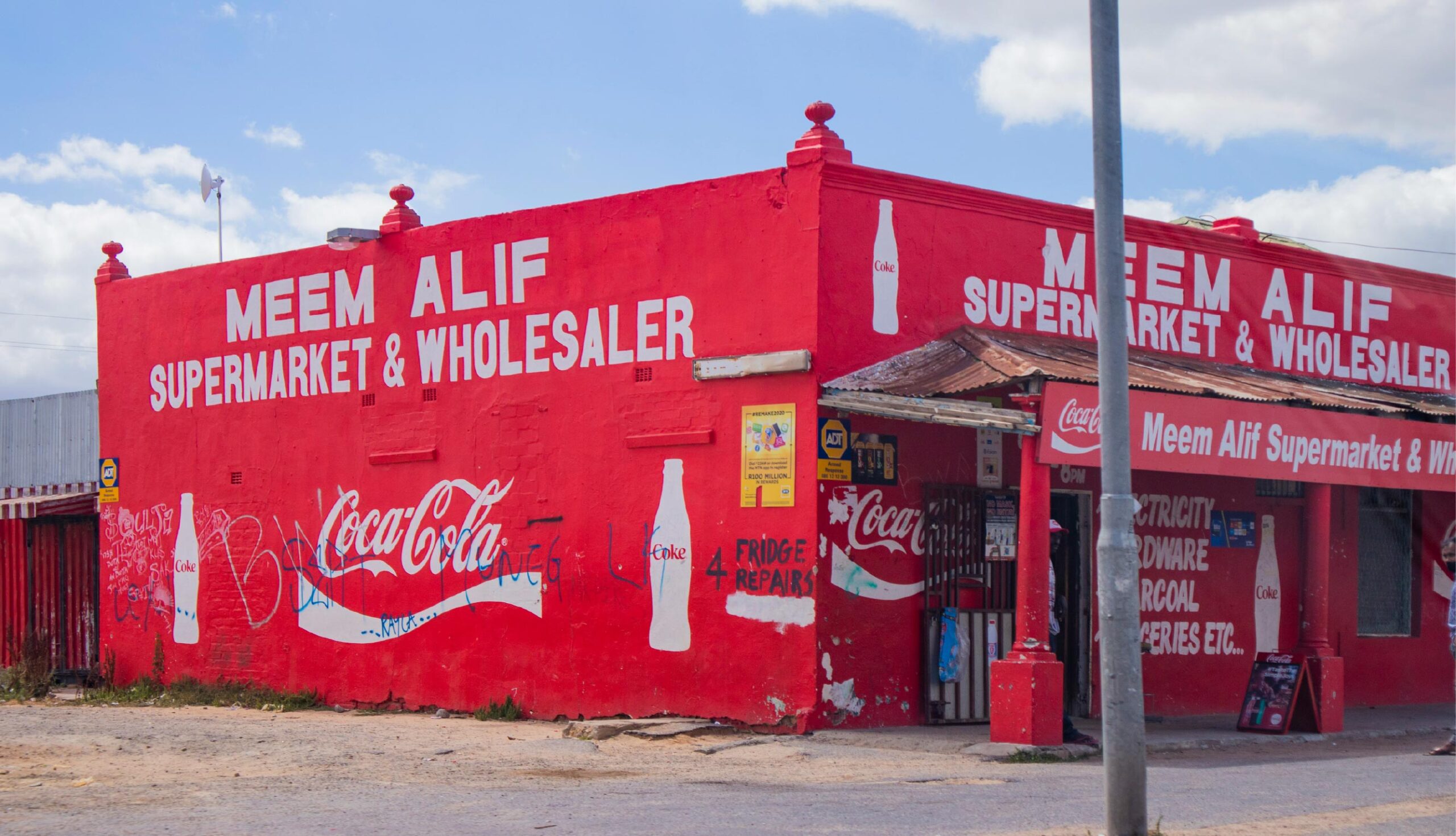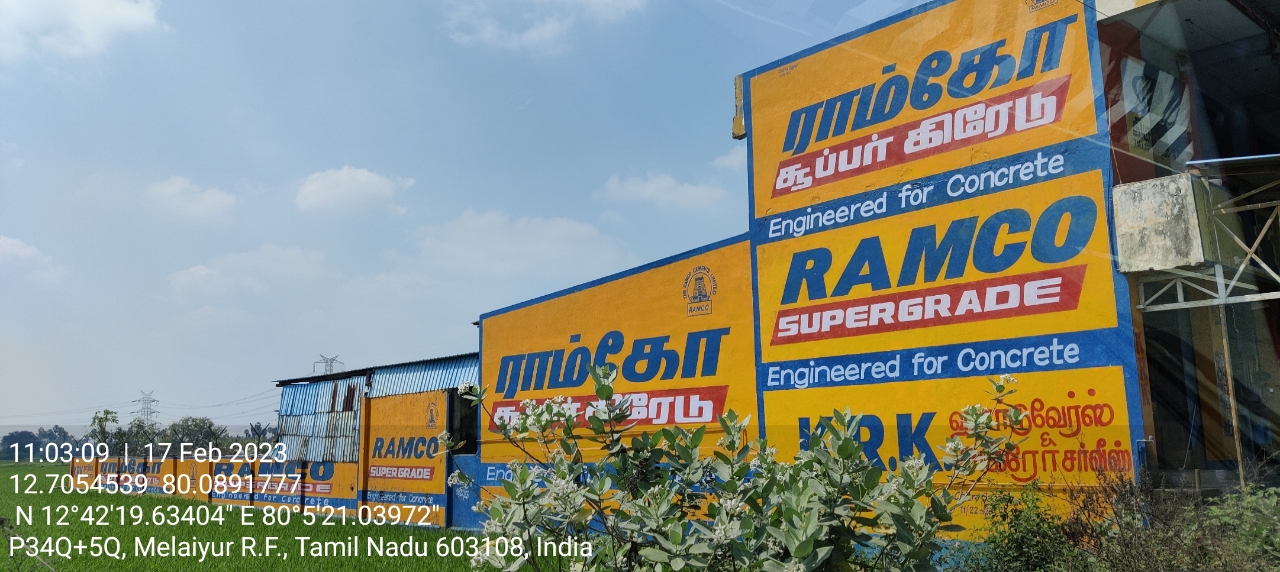Wall painting is as old as outdoor advertising gets—and in many parts of India, it still works better than most modern media. Whether it’s a telecom brand in UP, a TMT Steel Company advertising campaign in rural MP, or a cement company in Maharashtra, the humble painted wall remains the preferred canvas.
It’s affordable, hyperlocal, and, perhaps most importantly, trusted.
Why Wall Painting Still Matters
In Tier-2 and Tier-3 towns, hoardings and wall paintings often coexist—but it’s the walls that carry local context and deeper recall, especially in lanes, markets, and village interiors where other media rarely go.
In marketplaces, near bus stands, along highways—walls become media, and media becomes memory.
For brands, wall painting offers a few key advantages:
- It’s visible for weeks, often months,
- It blends into local life,
- It works well with regional languages and cultural cues, and
- It delivers reach in areas where nothing else can.
Which is why even today, you will find big brands running massive rural campaigns that are entirely wall-based.

But Here’s the Problem
Wall painting campaigns are difficult to manage. And harder to monitor.
Wallscapes are managed across multiple locations, sometimes hundreds of them, with different vendors, timelines, and local teams. There’s no real-time update, no shared dashboard, and certainly no clean audit trail.
Photos come in—but are they from the actual location? Are they recent? Was the wall painted where it was supposed to be? Was it even painted at all?
That’s the uncomfortable part no one talks about.
The Lifecycle of a Wall Painting Campaign
On paper, the process is simple:
- Select locations
- Finalize vendors
- Approve creatives
- Paint walls
- Send proof
- Close campaign
But in practice, it’s rarely this linear. Delays happen. Locations change. Walls get repainted. Sometimes, a single photo gets sent for ten different sites.
Which is why monitoring tools are becoming necessary—not optional.
What Monitoring Looks Like Today
Monitoring isn’t just about checking if the job was done. It’s about knowing:
- Where exactly each wall was painted
- When the painting happened
- Whether the creative was correct
- If the site matched the plan
- And if the proof is legitimate
That’s where Oohaudit.com comes in—built to bring clarity and accountability to something that’s otherwise hard to track. We help brands and agencies track their campaigns with geotagged proof, time-stamped photos, vendor accountability, and most importantly, visibility across locations.

The Real Value of Audit & Verification
Wall painting, when done right, delivers unmatched recall value. But without ground-level verification, the entire campaign runs on assumptions. And assumptions are expensive.
You wouldn’t run a TV ad without knowing where it aired.
Why treat your outdoor campaigns any differently?
Effective monitoring is the missing layer in most wall painting campaigns. And without it, even the best-planned efforts risk falling short on execution.

Wall Painting Monitoring involves more than just collecting photos. It requires:
- Real-time tracking of sites as work progresses.
- Geo-verification to confirm the exact location of each wall painting.
- Timestamped proof to establish when the work was carried out.
- Centralised dashboards for visibility across teams, states, and executives.
- Systematic reporting to assess quality, coverage, and compliance.
We have developed dedicated tools to handle this complexity.
The Moshpit app allows on-ground teams to submit geo-tagged, timestamped proof directly from the site, creating a verified trail of campaign performance. Every field activity is updated to a centralized dashboard where supervisors can review progress in real-time.



This is especially useful in large-scale campaigns with hundreds of sites spread across geographies, where manual coordination is inefficient and error-prone.
In an earlier post, we discussed how the platform is built for operational reliability, and how brands have used it to bring order and accuracy to traditional media campaigns.
In an earlier post, we discussed the Moshpit app in detail—highlighting some of its key features, including location verification, timestamped uploads, and centralised tracking for large-scale execution.
You may read more about the tool and how it works here.
These tools are designed specifically for managing wall painting campaigns at scale. The process is simple: on-ground teams use the app to upload geo-tagged, time-stamped images from each site. The data flows directly to a central dashboard, giving campaign managers a real-time view of what’s happening, where, and when. Every site is accounted for, and every update is verified.
For wall painting campaigns, structured monitoring means:
- Fewer errors and missed sites
- Standardised reporting across teams
- Faster decision-making and campaign closure
- Audit-ready documentation from day one
Wall painting works. It continues to be a reliable medium for rural outreach and brand visibility.
With the right tools in place, you get proof, not promises.
And that makes all the difference.
Closing Thought
Wall painting continues to be one of the most effective formats for building rural visibility and brand recall. It works because it’s familiar, persistent, and woven into the everyday landscape of Tier-2 and Tier-3 India. But as the scale of campaigns grows, so does the complexity of managing them.
Without proper systems in place, Wall Painting Campaigns are difficult to manage. Sites are missed, timelines slip, and reporting loses credibility. What should be a straightforward, high-impact campaign turns into a series of follow-ups and unanswered questions.
If you’re running wall painting campaigns across regions and need a reliable way to monitor and validate execution, we can help.
Learn more at oohaudit.com.
